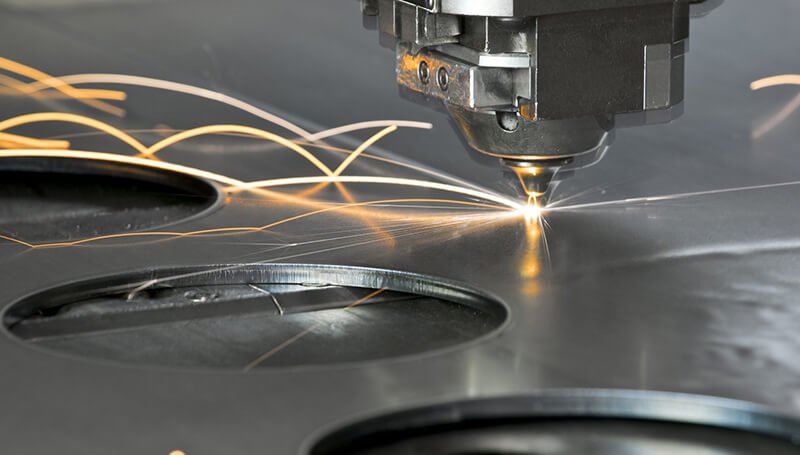
In today’s advanced manufacturing landscape, the CNC laser cutting machine has emerged as a game-changer for industries seeking precision, efficiency, and versatility. With evolving technology, the integration of laser cutting in manufacturing processes has allowed companies to create intricate designs, reduce material waste, and speed up production. From small-scale workshops to large industrial facilities, the demand for this cutting-edge technology continues to rise.
The Growing Importance of CNC Laser Cutting Machine
A CNC laser cutting machine combines computer numerical control (CNC) systems with powerful laser technology to cut or engrave various materials with unmatched accuracy. These machines have become essential in industries such as automotive, aerospace, construction, and metal fabrication. Their ability to deliver high-quality results consistently makes them an indispensable tool for modern production lines.
One of the most notable advantages of a CNC laser cutting machine is its precision. By following programmed digital designs, these machines can execute complex cuts without manual intervention, eliminating human errors and reducing lead times significantly.
How CNC Laser Cutting Machines Work
The working principle of a CNC laser cutting machine involves directing a concentrated laser beam onto the surface of the material. The energy from the laser heats and melts the targeted area, allowing for a clean and accurate cut. Coupled with CNC programming, this process ensures that every cut meets the desired specifications.
Modern systems also include automated controls, making it easy to switch between different materials and designs. Whether it’s thin sheets or thick metals, the machine adjusts parameters automatically to deliver precise results.
Key Components of CNC Laser Cutting Machines
-
Laser Source – Can be CO2 or fiber lasers depending on the application.
-
CNC Controller – Manages the machine’s movement and cutting parameters.
-
Optics and Beam Delivery – Directs the laser beam precisely to the cutting point.
-
Assist Gas System – Removes molten material and ensures clean cuts.
Types of Laser Cutting Machines
While the term CNC laser cutting machine broadly applies to many systems, there are distinct types designed for different materials and needs.
1. Fiber Laser Cutting Machine
A fiber laser cutting machine is ideal for cutting metals such as steel, aluminum, and brass. Its efficiency, low maintenance, and ability to handle reflective metals make it a preferred choice for industrial applications.
2. CO2 Laser Machine
The CO2 laser machine is known for its versatility in cutting non-metallic materials like wood, plastic, and acrylic. It is also used for engraving and offers smooth edge quality.
3. Metal Laser Cutting Machine
A metal laser cutting machine focuses specifically on cutting various metals with high precision. Industries involved in heavy-duty fabrication rely heavily on these machines for their robust capabilities.
4. Laser Cutting Machine for Metal
A laser cutting machine for metal is optimized for efficiency and speed, making it perfect for large-scale industrial manufacturing that requires accurate and repeatable cuts on different metals.
Advantages of CNC Laser Cutting Machine
The CNC laser cutting machine has become a standard tool in manufacturing because of its numerous benefits:
1. Unmatched Precision and Accuracy
These machines offer tolerances that are nearly impossible to achieve with traditional cutting methods. Every cut matches the programmed design perfectly.
2. High Efficiency and Speed
By automating the cutting process, manufacturers can significantly reduce production time while maintaining consistency.
3. Versatility Across Materials
Whether using a fiber laser cutting machine, CO2 laser machine, or a metal laser cutting machine, industries can work with metals, plastics, wood, and more.
4. Cost-Effective Production
The accuracy of the CNC laser cutting machine reduces material waste, saving costs in the long run.
5. Minimal Maintenance and Downtime
Modern laser machines are designed for long-term use with minimal maintenance, ensuring smooth operations.
Applications of CNC Laser Cutting Machine
The scope of a CNC laser cutting machine spans across numerous industries:
-
Automotive: For precision parts and components.
-
Aerospace: Cutting lightweight yet durable materials.
-
Construction: Creating steel frameworks and metal components.
-
Signage and Design: Engraving and shaping artistic elements.
Fiber Laser Cutting Machine vs. CO2 Laser Machine
When deciding between a fiber laser cutting machine and a CO2 laser machine, it’s essential to consider the material and application:
-
Fiber Laser Cutting Machine: Best for metal cutting, faster speeds, lower operating costs.
-
CO2 Laser Machine: Ideal for non-metals and offers superior edge quality for organic materials.
Many manufacturers invest in both types to broaden their capabilities.
Why Industries Prefer Metal Laser Cutting Machine
The metal laser cutting machine is widely adopted because of its ability to deliver precision in heavy-duty fabrication. From stainless steel panels to aluminum sheets, these machines produce clean, burr-free cuts that reduce the need for secondary finishing.
A laser cutting machine for metal is especially valuable in high-volume production where speed and consistency are critical.
Future of CNC Laser Cutting Machine Technology
As technology continues to advance, the CNC laser cutting machine is expected to become even more efficient. Innovations such as AI-driven programming, IoT connectivity, and faster automation will further enhance productivity and precision.
Emerging hybrid machines that combine multiple functions are also revolutionizing fabrication, reducing the need for multiple setups and operators.
Conclusion
The CNC laser cutting machine has transformed modern manufacturing, offering unmatched precision, speed, and flexibility. Whether using a fiber laser cutting machine, CO2 laser machine, metal laser cutting machine, or a laser cutting machine for metal, industries now have the tools they need to stay competitive and deliver superior products.
By embracing these advanced technologies, manufacturers are not only improving productivity but also paving the way for innovative designs and applications in the future.







